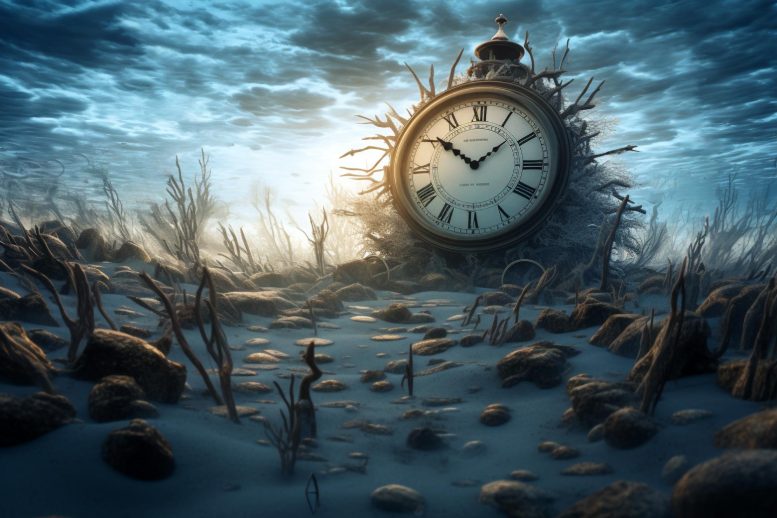
Computer simulation shows the release of only 1% of dormant pathogens could cause major environmental damage and the widespread loss of host organisms around the world.
Climate change could expedite the liberation of ‘time-traveling’ pathogens from melting permafrost and ice, where they have been trapped for millennia. The re-emergence of these pathogens poses increasing threats to both the global environment and even humanity itself.
Melting glaciers and permafrost potentially risk reviving many types of dormant pathogens. However, the potential damage these microbes could inflict on modern ecosystems is challenging to predict.
New Study Estimates Ecological Risks
A groundbreaking global study conducted by Dr. Giovanni Strona of the European Commission Joint Research Centre, and Matthew Flinders Professor of Global Ecology Corey Bradshaw from Flinders University in Australia, has assessed the ecological risks. The study, published on July 27 in the open-access journal PLOS Computational Biology, endeavored to quantify the threats posed by the release of these ancient, unpredictable microbes.
The researchers devised simulated experiments where digital pathogens from the past invaded communities of bacteria-like hosts. They compared the effects of these invading pathogens on the diversity of host bacteria against communities where no invasions took place.
Findings: Pathogens’ Survival and Impact
Remarkably, the researchers found that in their simulations, the ancient invading pathogens often survived and evolved in the modern world. About 3% of these pathogens even became dominant in their new environment.
Roughly 1% of those invaders demonstrated unpredictable results. Some caused up to one-third of the host species to die out, while others increased diversity by up to 12% in comparison to simulations where no escape was allowed.
Although the risks posed by this 1% of released pathogens may seem minor, considering the vast number of ancient microbes regularly released into modern environments, these outbreaks present a substantial danger, according to the researchers.
Expert Opinions
Dr. Giovanni Strona, the study’s lead author, said “The scientific debate on the topic has been dominated by speculation, due to the challenges in collecting data or designing experiments to elaborate and test hypotheses. For the first time, we provide an extensive analysis of the risk posed to modern ecological communities by these ‘time-traveling’ pathogens through advanced computer simulations.”
“We found that invading pathogens could often survive, evolve and, in a few cases, become exceptionally persistent and dominant in the community, causing either substantial losses or changes in the number of living species. Our findings, therefore, suggest that unpredictable threats so far confined to science fiction could, in reality, pose serious risk as powerful drivers of ecological damage.”
Flinders University Professor Corey Bradshaw says the new findings show that the risk of invasion of unknown ‘black swan’ pathogens that can cause irreversible damage is not negligible.
“From that perspective, our results are worrisome, because they point to an actual risk deriving from the rare events where pathogens currently trapped in the permafrost and ice produce severe ecological impacts. In the worst, but still entirely plausible case, the invasion of a single ancient pathogen reduced the size of its host community by 30% when compared to our non-invasive controls.”
The Need for Preparedness
“As a society, we need to understand the potential risk posed by these ancient microbes so we can prepare for any unintended consequences of their release into the modern world. The results tell us that the risk is no longer simply a fantasy that we shouldn’t be prepared to defend against.”
The researchers used Avida, an artificial-life software platform developed by Michigan State University, to construct and test the simulated release of the digital pathogens into biological communities.
Reference: “Time-travelling pathogens and their risk to ecological communities” by Giovanni Strona, Corey J. A. Bradshaw, Pedro Cardoso, Nicholas J. Gotelli, Frédéric Guillaume, Federica Manca, Ville Mustonen and Luis Zaman, 27 July 2023, PLOS Computational Biology.
DOI: 10.1371/journal.pcbi.1011268
2 Comments
“Some caused up to one-third of the host species to die out, while others increased diversity by up to 12% …”
Is this the range of observed effects? What is the uncertainty of the individual observations? What is the probability of the different results? This research leaves a lot of unanswered questions such as, “How do the results change with different starting populations?” If we are talking about a viable, fugitive population escaping from the permafrost, 1% might be too large.
Something to consider is that organisms that exist today may have been part of the biological ‘landscape’ when the Arctic froze over. Today’s organisms have survived because of greater fitness or evolved traits, while the organisms frozen in ice had their evolution suspended for ten’s of thousands of years and may be less fit. How would one test that hypothesis digitally?